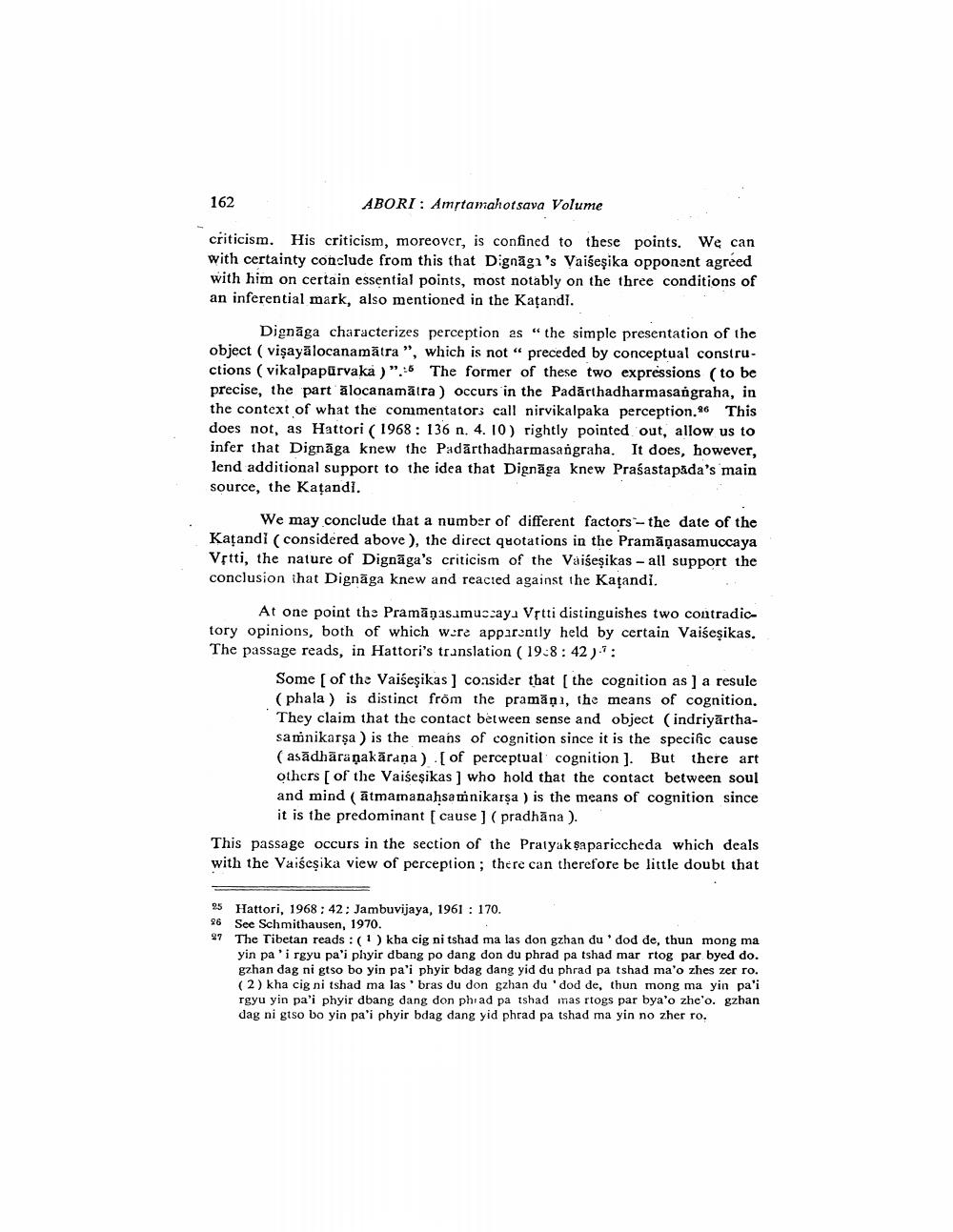________________
162
ABORI: Amstamahotsava Volume
criticism. His criticism, moreover, is confined to these points. We can with certainty conclude from this that Dignāga's Vaisesika opponent agreed with him on certain essential points, most notably on the three conditions of an inferential mark, also mentioned in the Kațandi.
Dignāga characterizes perception as the simple presentation of the object ( vişayālocanamätra ", which is not“ preceded by conceptual constructions ( vikalpapūrvaka ) ".:5 The former of these two expressions (to be precise, the part alocanamātra) occurs in the Padārthadharmasangraha, in the context of what the commentators call nirvikalpaka perception. This does not, as Hattori (1968: 136 n. 4. 10) rightly pointed out, allow us to infer that Dignāga knew the Padārthadharmasangraha. It does, however, lend additional support to the idea that Dignāga knew Prasastapada's main source, the katandi.
We may conclude that a number of different factors - the date of the Kațandi (considered above), the direct quotations in the Pramāṇasamuccaya Vrtti, the nature of Dignāga's criticism of the Vaişeşikas - all support the conclusion that Dignāga knew and reacted against the Kafandi.
At one point tha Pramānasamuscay, Vrtti distinguishes two contradictory opinions, both of which were apparently held by certain Vaiśeşikas. The passage reads, in Hattori's translation (19:8:42):
Some of the Vaišeşikas) consider that the cognition as a resule (phala) is distinct from the pramāņi, the means of cognition. They claim that the contact between sense and object (indriyārthasamnikarsa ) is the means of cognition since it is the specific cause (asādhāraṇakārana) (of perceptual cognition ). But there art others of the Vaišeşikas ) who hold that the contact between soul and mind (atmamanahsamnikarsa ) is the means of cognition since
it is the predominant ( cause (pradhana ). This passage occurs in the section of the Pratyak sapariccheda which deals with the Vaiseşika view of perception; there can therefore be little doubt that
25 Hattori, 1968: 42: Jambuvijaya, 1961 : 170. 26 See Schmithausen, 1970. 29 The Tibetan reads : (1) kha cig ni tshad ma las don gzhan du 'dod de, thun mong ma
yin pa'i rgyu pa'i phyir dbang po dang don du phrad pa tshad mar rtog par byed do. gzhan dag ni gtso bo yin pa'i phyir bdag dang yid du phrad pa tshad ma'o zhes zer ro. (2) kha cig ni tshad ma las' bras du don szhan du 'dod de, thun mong ma yin pa'i rgyu yin pa'i phyir dbang dang don phrad pa tshad mas rtogs par bya'o zhe'o. gzhan dag ni gtso bo yin pa'i phyir bdag dang yid phrad pa tshad ma yin no zher ro.




